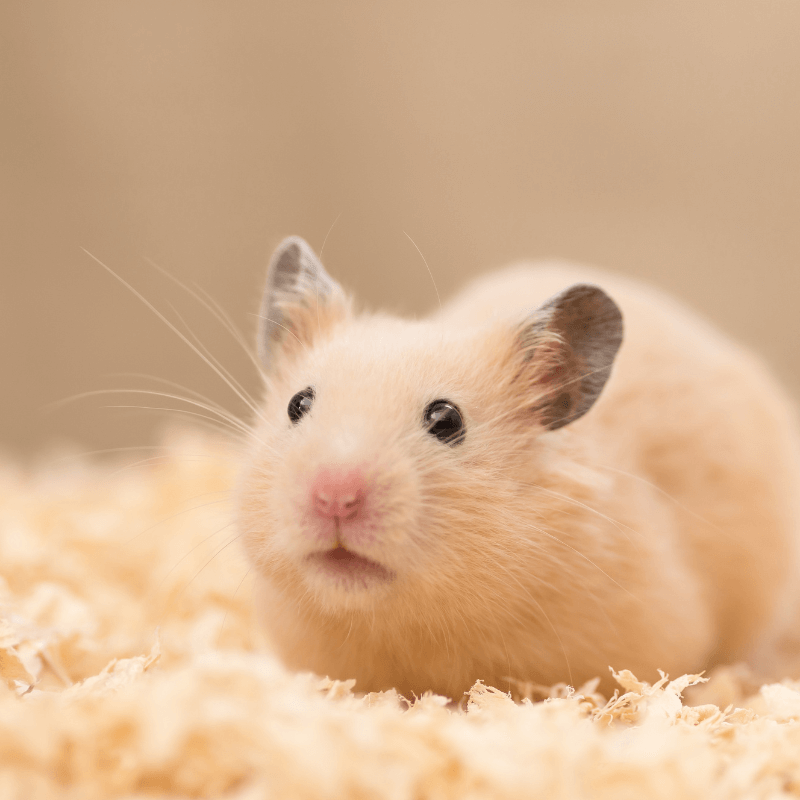

· By Platts Pets
A Guide to Hamster Bedding and Cages
Bedding for a hamster is the most important aspect of your pet's cage. It ensures a comfortable and warm environment, as well as a natural habitat for your pet to thrive in.
We have put together a comprehensive guide to creating the ideal home for your hamster. Below, we cover everything from the best bedding choices that mimic their natural behaviors to creating a safe cleaning routine.
Read our guide to the best hamster bedding below...
1. Choosing the right hamster cage

When choosing the right hamster cage, there are a few aspects that you must consider to give your new pet the perfect home. You must also consider that different hamster breeds, need different housing.
As they are highly active creatures, they must have enough space to exhibit normal behaviours, such as burrowing, climbing, walking and running.
In the UK, the Syrian hamster and the dwarf species are the most popular for pets. Below are the cage size requirements for the breeds:
The minimum cage size for a Syrian hamster:
- Length: 100cm
- Width: 50cm
- Height: 50cm
- Bar spacing: 1cm is the safest size
The minimum cage size for a dwarf species:
- Length: 100cm
- Width: 50cm
- Height: 40cm
- Bar spacing: 6mm is the safest size
When choosing a cage for your hamster, purchase a cage with a good airflow system, this will ensure that there is adequate ventilation to create a healthy environment.
To protect your hamster's feet, be sure to choose a hamster cage with a solid floor. Pet owners should avoid wire-bottom cages, as these can cause injuries.
2. Choosing the best bedding for hamsters

Choose the right bedding for a hamster is the most important step in creating a safe and comfortable environment for your pet.
Regardless of the hamster bedding you choose, hamster bedding is multiple purposed. The bedding will be the ground that they walk on, dig to make a burrow and a chamber to sleep.
It will also act as an absorbent for urine, protects your pet from hot and cold temperatures and the different textures will provide enrichment.
There are many different types of hamster bedding available, however we recommend our premium wood shavings, designed with your furry friend in mind.
Our small pet bedding is ideal for hutches and cages, offering a soft and cushioned bed. Our bedding has many benefits, including improve air quality, reduced mess and clean up, odour control and allergy prevention.
Moreover, you must also avoid unsafe hamster bedding, including scented bedding, pine and cedar wood shavings, cat litter pellets, and fluffy/cotton bedding.
3. The ideal hamster cage set up

A good hamster cage set up will ensure that your pet is healthy and happy!
To ensure a good set up for a hamster, you must ensure that they are in a quiet place where they can rest undisturbed and not exposed to draughty, damp conditions.
You should also set up your hamster's cage away from objects that can generate ultrasound, such as a television, hoovers and sources of running water.
Your hamster will also need a water bottle with water replaced daily, as well as fresh food scattered around their living space - this will keep them entertained!
Hamsters will also need toys and interactive games to hinder boredom. Tunnels, ladders, exercise wheels and chew boys are all good additions to a hamster's cage set up.
4. Cleaning your hamster's housing

When it comes to bedding for a hamster, keeping the cage clean is key to ensuring that your pet is healthy and disease-free. This includes daily, weekly, and monthly maintenance to keep everything clean and fresh.
Everyday, you should remove any soiled bedding, wash water and food dishes and provide them with fresh food and water.
As well as removing any soiled bedding daily, you should plan to replace all of the bedding in the cage once a week.
A deep clean should happen once a month and this will involve a deep clean of your hamster's entire habitat. This will involve moving your hamster to a secure location (a travel carrier or playpen), removing all items from the cage and clean thoroughly with a pet-safe disinfectant.
You should also take this time to check the cage structure, inspecting the cage for any loose bars, broken parts and potential escape routes.
Did you find our bedding for a hamster tips helpful? Find even more tips on our Facebook and Instagram pages! Secure your pet's bedding today and ordering our premium wood shavings.
